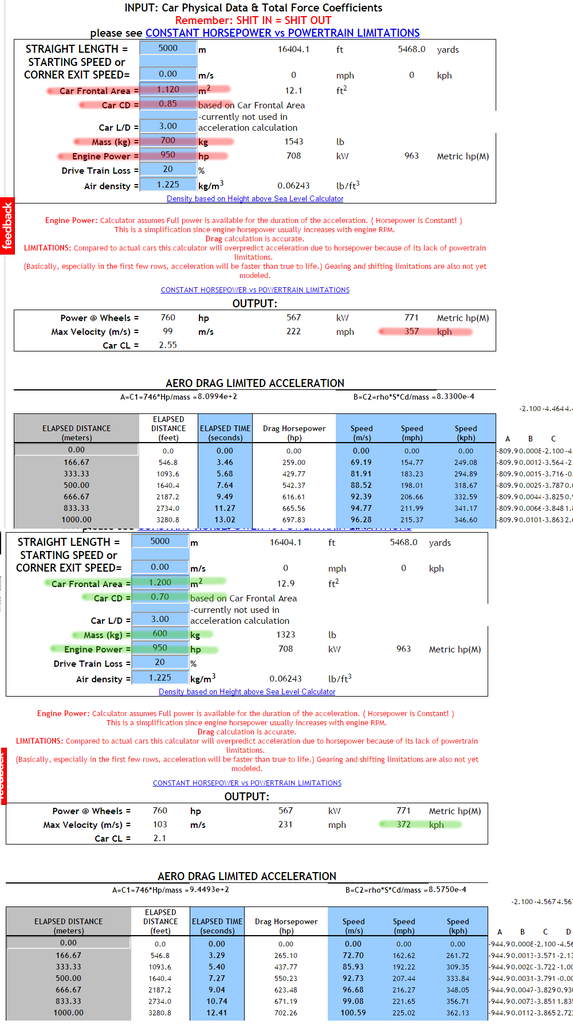I think I can combine these...
Juzh wrote:But time spent in traction limited state is much less than time spent in non traction limited state (aka full throttle). One would assume (obviously) NAs produced max power at max RPM, effectively limiting available max power usage to a split second before upshift had to be performed to either avoid over-rev or hitting the rev limit.
V6T does not have this problem with more or less constant power from 10.5k rpm upwards.
mrluke wrote:My only concern is that the V10s appear to be further ahead at the end of the straights than they are at the start whereas your analysis shows the V6Ts are going somewhat faster and catching up the V10s by the end of the straight.
Unlike acceleration beyond 100kph, which is largely a product of power and drag, acceleration from 0 to 100kph is most greatly influenced by a car's power-to-weight ratio. That means a much lighter, far more powerful V10-era car will be decisively quicker from a dead stop than a current car. But, as speeds increase, and the effects of drag are multiplied exponentially, the lower drag of the current car will start to pay off, and it will eventually overtake the V10-era car if allowed enough distance.
 V6t
V6t
 V10
V10
For our hypothetical cars on a 5000m run that begins from a dead stop, that transition begins at around 1333m.
This is why an engine's power band isn't anywhere near as important as peak power. I think current PU regulations created a wide power band mainly for flexibility, because everyone knew gear ratios would be the same at every circuit.
mrluke wrote:Which is all well and good but leaves us in the frustrating position of being unable to calculate engine power from straight line performance.
One can make a pretty decent estimate by using speed traps. I did it last year when that data was freely available on F1.com.
Speaking of which, --- FOM with a big rubber dick for monetizing that. Seriously.
At some point, I'm convinced those miserly --- are going to attempt to charge people for even talking about the sport.
Then again, what do you expect from a pig but a grunt?










